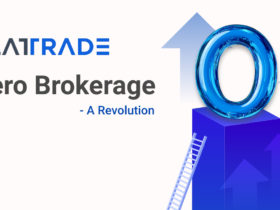India’s non-life insurance market is expected to grow by approximately 13-15% over the medium term, primarily, driven by rise in health and motor insurance, according to CareEdge Ratings. In addition, greater volume of transactions under segments such as fire, marine and export credit is expected to support non-life insurance market. The growth is attributed to rise in disposable income, customised product in heath and motor insurance, and gradual introduction of new products.
Further, improving profitability, stabilisation of loss ratios, cost control of management expenses given the upcoming regulations, and enabling regulatory environment will aid the sector’s growth, according to CareEdge report. Moreover, strengthening of distribution networks, increase in the number of partners, digital issuance and online channels are expected to witness continued growth. Also, higher investment yields due to a rising interest rate environment and adequate availability of growth capital will support the sector’s growth.
Non-Life Insurance Industry
Currently, more than 30 companies operate in India as non-life insurers. Out of that , there are six public sector companies and the remaining are from the private sector. This is because the industry was opened to the private sector in 2001 and it has witnessed several changes (regulatory and structural) and has undergone transformation leading to increased penetration/coverage, rise of multiple channels, and intensifying competitiveness in the market. The industry has also witnessed trends such as increased digital presence, emergence of InsureTech for innovations around customer education & service/ products/ technology/ delivery systems for access.
However, the share of public sector insurance companies has been on a downtrend. In FY22, the private players of non-life insurance sector have continued to outpace their public peers, with the private companies (14.8%) growing at twice the pace of their public counterparts (6%). The market share of private non-life insurance companies has increased to 59% in FY22 from 56% in FY20.
Meanwhile, the Indian non-insurance industry’s total premium income grew from Rs 1.3 lakh crore in FY17 to over Rs 2.2 lakh crore in FY22, which is a CAGR of nearly 11.5%. In H1FY23, the industry has grown by 15.3 % (on y-o-y basis), compared to 12.6% in H1FY22.
While public sector companies derive the largest share of their premiums from the agency channel, their private counterparts source the highest share of their business from the broker channel. For the aggregate industry, brokers continue to remain the largest channel.
Private companies have achieved nearly double-digit share in the Banca channel, while their public counterparts top out at just over 1%. The contribution of the Agency channel to the new business premium decreased from 24.28% in FY21 to 22.01% in FY22. Further, the direct selling channel’s share is high, primarily based on group business being sourced directly by the companies.
Further, health insurance, which is expected to cross the Rs one lakh crore, and motor insurance that is likely to reach Rs 85,000 crore level by FY24, would continue to constitute the primary levers of non-life insurance growth. Health and Motor insurance sector continue to be major contributors having a 66% stake in gross direct premium in FY22. Fire and Crop, each contribute around 10%-15% to the gross direct premium, while the other segments make up the balance.
Segment-wise Loss Ratio
CareEdge Ratings said that the health insurance segment’s loss ratio peaked during FY22 due to Covid-led claims, but moderated later. Moreover, the moderation along with increased pricing especially in group health insurance and rising awareness has helped the insurers to improve the top line benefiting the loss ratio.
The report said that CareEdge expects the loss ratio in the motor segment to remain largely in line with past trends. The loss ratio in the crop insurance segment which contributes around 10-15% of gross direct premium written, will continue to remain dependent on weather conditions and thus will remain volatile.
For other segments, the loss ratio is expected to be in line with past trends subject to any external shocks. The overall loss ratio for non-life insurers peaked during FY22 at 92% due to Covid-led claims but moderated to 87% in H1FY23. The loss ratio is expected to further reduce to around 85-86% in the future.
Expense Management
CareEdge noted that the high customer acquisition costs continue to impact the expenses of management in the non-life insurance industry. Expenses of management to net earned premium has ranged between 29% – 33% in the past. It reduced to around 30% in FY22, however again normalized to 33% in H1FY23.
According to the report, CareEdge expects loss ratio to be largely range bound. Health insurance has a relatively high expense ratio as compared to other segments due to its operationally intensive nature from the perspective of claims management, engagement with agency channels and workflow running with the network hospitals.
Nonetheless, the proposed regulation to remove the product-wise cap on commission rates and implement of overall limit on expenses of management to 30% for general insurers and 35% for health insurers is considered positive for the industry. This will provide the insurers much-needed flexibility to push key product segments and to make required investments in distribution networks.
Outlook
CareEdge expects the non-life insurance companies to incur significant investments into overall digital enablement across the distribution channels along with expanding the online/digital distribution channel, simplifying the insurance purchase experience that wil boost underwriting capacities and improves costs wthat will sustain margins.
Overall, though the outlook is expected to be stable in the medium term, intense competition, uncertain geopolitical environment, and high inflation, can negatively impact economic growth and subsequently the non-life insurance sector.





